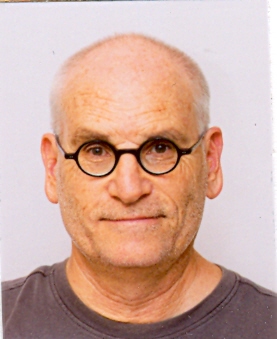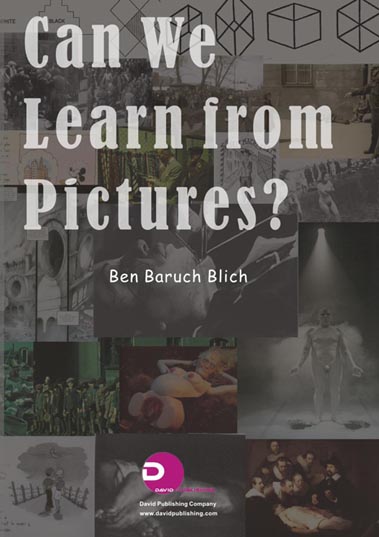0pp 0
- ISBN: (Ebook) 1-934502-07-3 USD $40.00
- ISBN: ( Print) 1-934502-07-3 USD $70.00
The
book is a collection of papers I have published in several academic journals
since the late eighties of the 20th century. Most of them have to do with the
problem of pictorial representation as part and parcel of my intention to extend
an approach to the study of visual culture based on the philosophy advocated by
Nelson Goodman and his followers. In a nutshell, Goodman has maintained that
visual objects of all sorts, such as paintings, photographs, comics, as well as
objects of design and architecture, share the trait of aboutness, i.e.: they
refer and denote objects in the real world symbolizing ideas and ideologies as
in the case of Design and Architecture. Objects of representation do not stand
on their own; they signify and retrieve information and as such they function
much the same as archeological objects for ancient cultures in the history of
mankind. Being a vehicle of information, practically means that they bring to
the open
Can We Learn from Pictures concealed
and undercurrent motivations prompted by the agents who have created them. Take
for instance the question I raise in the chapter 6 dealing with Nazi
photographers who took unauthorized quick snaps of the Jews in the concentration
camps, or comics depicting the Holocaust in chapter 8 both refer to historical
facts, and yet their concealed undercurrent motivations reveal another story; a
story of revenge as in the case of the Nazi photographers, and fear as in the
case of comics. The same goes with depictions which use the body as their
central theme (chapters 7, 9). The body for centuries was considered the most
beautiful object glorified by poets, painters, sculpture, photographers and
architects. Why all of a sudden in the late 19th century the picture has been
changed which brought to the open a new approach rendering the body as twisted,
ugly and deformed. Was it because artists suddenly paid attention to the
deprived side of our reality, or as suggested by me art has stepped down from
its high elated position, incorporating the popular low art as a legitimate part
of its expression.
The book opens with two papers
discussing Goodman"s assertion according to which realism is a matter of habit,
and not as a matter of similarity. By incorporating Wittgenstein"s family
resemblance, I set an alternative to Goodman"s straightforward dictum. Chapter 3
points at the differences between two methods of displaying art practically used
by An Introduction museums, galleries and even us in our private homes. Since
art objects are always about something, be it an object or a scenery in reality,
or about an idea, it is vital to discuss their nature as objects of reference.
Chapters 4 and 5 discuss the merit of art objects as vehicles of denotation, and
their power of teaching us to see and enhance the world we live in.Pictures are
an enigma. They are considered the most common and most readily perceived means
of communication, but as soon as we try to explain the reality they stand for,
it becomes clear that unusual perceptual processes are involved. This polarity
between the immediate automatic apprehension of the content represented by
pictures, and the difficulty in explicating it, stems from the fact that
pictorial representation is an extremely strange creature. The collection of
papers presented here are an attempt to unveil this enigma.
I want to thank my colleagues and students for
encouraging me to publish this collection, to Bezalel academy of art and design
for sponsoring and supporting this book, to my wife Sara for her love and
patience, and dedicate the book to the memory of my mother Mina who taught me
how to look at pictures.
Ben Baruch Blich
History and Theory
Bezalel Academy of Arts and Design, Jerusalem
2013

Ben Baruch Blich, b. New York, USA. (ph.d. thesis: Pictorial representation and its cognitive status), at present a senior lecturer in Bezalel –Academy of Arts and Design, Jerusalem. His interests and publications are in the fields of Visual Culture in the history of Western civilization: visual representation, culture and information, art, photography, media studies, animation, comics, and the cinema. In 1989 a visiting scholar to the Warburg Institute in London University working with Prof. Roger Scruton and Sir E. Gombrich. In 2002 a guest Professor to the Hisk (Hoger Institute voor Schone Kunsten) in Antwerp. His papers were presented in various journals and conferences. Last publications "The body as Mirror", in: Territorial bodies, Waanders Uitgevers, Den Haag, and "Body representation in Photography" in The weight of Photography, Free University in Brussels. At present he writes 3 books on photography: 'Photography in conflict: representing political upheavals'; 'Bodies represented by the Camera'; 'Amateur photographers during World war 2". Blich is an editor of the e-journal 'History and Theory: Protocols', issued by the History and Theory Dept. in Bezalel.
[email protected]
